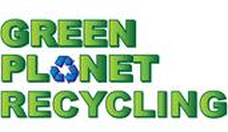
Organic waste refers to any type of waste material that originates from plant or animal sources and can decompose naturally. This includes a wide range of materials such as food scraps, yard trimmings, paper products, and even some types of biodegradable plastics. Unlike non-organic waste, which often ends up in landfills and takes years to break down, organic waste has the potential to be recycled or processed in a way that benefits the environment.
One of the key characteristics of organic waste is its ability to undergo decomposition through the actions of microorganisms such as bacteria and fungi. These organisms break down the organic matter to release nutrients, which can then be used by plants and other organisms in the ecosystem. This natural recycling process helps to maintain the balance of nutrients in the soil and supports the growth of new life. However, if organic waste is not managed properly, it can produce harmful gases such as methane, a potent greenhouse gas that contributes to climate change. Therefore, it is important to find sustainable solutions for managing organic waste in order to minimize its environmental impact.
Diapers: A Brief Overview
Diapers are an essential item for babies and young children, providing comfort and convenience for both parents and their little ones. Typically made from a combination of natural and synthetic materials, diapers serve the purpose of absorbing and containing urine and feces. They are designed to keep babies dry and prevent leaks, making them a popular choice for parents across the globe.
The composition of diapers generally includes layers of absorbent materials such as wood pulp, superabsorbent polymers, and a moisture-wicking top layer. The outer material is often made from a polyethylene film, which helps to prevent leaks and keep moisture locked inside the diaper. Additionally, elastic bands and adhesive tapes are used to ensure a snug and secure fit. With advancements in technology, diapers have become increasingly effective in providing protection and comfort, allowing infants to stay dry for longer periods of time.
The Composition of Diapers
Disposable diapers are composed of a combination of materials that provide both absorption and comfort for infants. The outer layer of a typical disposable diaper is made of polyethylene, a durable and waterproof plastic material. This layer helps to prevent leaks and keep the baby’s skin dry. Inside the diaper, there is a layer of super-absorbent polymer (SAP) that can hold a significant amount of liquid. This SAP is typically made from sodium polyacrylate, a material that absorbs moisture and turns it into a gel-like substance. This helps to keep the baby’s skin dry and reduce the risk of diaper rash. Additionally, the inner layer of the diaper is usually made of a soft and breathable material, such as rayon or cotton, to ensure the baby’s comfort.
However, diapers are not solely made of these materials. They also contain various adhesives and elastic materials for securing the diaper around the baby’s waist and legs. These adhesives are typically derived from petrochemicals or synthetic resins. Furthermore, diapers may also contain dyes and fragrances to mask odors and provide a more pleasant experience. It is important to note that the specific composition of diapers may vary among different brands and product lines. With a thorough understanding of the composition of diapers, it becomes possible to delve into their biodegradability and environmental impact.
Biodegradability of Diapers
When it comes to the biodegradability of diapers, there are mixed opinions and conflicting information. Diapers are primarily made up of three main layers: the outer layer, absorbing layer, and inner layer. The outer layer is often made of plastic or synthetic materials, which are not easily biodegradable. The absorbing layer contains superabsorbent polymers (SAPs), which are also not biodegradable. Finally, the inner layer is usually made of cellulose fibers, which are biodegradable but can take a considerable amount of time to break down.
While some diaper manufacturers claim to use biodegradable materials in their products, the reality is that the majority of disposable diapers end up in landfills where conditions for decomposition are not ideal. Landfills are designed to minimize the breakdown of waste, which means that even biodegradable materials can take several years to degrade in this environment. Additionally, the high number of diapers being discarded on a daily basis contributes to the already overwhelming waste problem our planet faces. Therefore, the biodegradability of diapers remains a complex and debatable issue.
The Environmental Impact of Diapers
The environmental impact of diapers is a topic of growing concern. Disposable diapers, which are widely used by parents around the world, have a significant impact on the environment. These diapers are made from non-biodegradable materials such as plastic, which means that they do not break down quickly or easily. As a result, disposable diapers contribute to the accumulation of waste in landfills, where they can take hundreds of years to decompose. This not only takes up valuable landfill space, but also releases harmful chemicals into the soil and water, posing a threat to both ecosystems and human health.
In addition to their long decomposition time, disposable diapers also have a significant carbon footprint. The production and distribution of disposable diapers require large amounts of energy and resources, contributing to greenhouse gas emissions and climate change. Furthermore, the process of manufacturing these diapers involves the use of various chemicals, such as chlorine and sodium polyacrylate, which can have detrimental effects on the environment. When these chemicals are released into the environment through landfill leachate or incineration, they can contaminate soil, water, and air, further exacerbating the environmental impact of diapers.
The environmental impact of diapers highlights the need for more sustainable alternatives. While cloth diapers have gained popularity as a greener option, they also come with their own challenges in terms of water and energy consumption during laundering. As such, researchers and companies are exploring other alternatives, such as biodegradable diapers made from natural and renewable materials. These diapers are designed to break down more easily in composting facilities or home composts, reducing their impact on landfills. However, the effectiveness and practicality of composting diapers are still subjects of ongoing research and debate.
As the environmental impact of diapers continues to be a pressing issue, it is crucial for individuals, communities, and policymakers to consider the long-term consequences of disposable diaper use and explore more sustainable options. By making informed decisions and supporting initiatives that promote eco-friendly alternatives, we can work towards minimizing the environmental footprint of diapering and creating a healthier planet for future generations.
Diaper Disposal Methods
When it comes to disposing of diapers, parents are faced with several options. One common method is to simply throw them in the trash bin, which then ends up in a landfill. This is the easiest and most convenient way, but it raises concerns about the environmental impact, as disposable diapers take hundreds of years to decompose. Another option is to flush solid waste down the toilet and then dispose of the diaper in the trash. This can be a more environmentally friendly option, as the waste is treated in sewage systems, but it can also put a strain on plumbing and wastewater treatment facilities.
Additionally, some parents choose to use diaper pails or specially designed diaper disposal systems. These systems typically use odor-blocking technology to contain the smell and often require the use of plastic bags or cartridges that are specially designed to hold and seal in the diapers. While these systems provide a convenient and hygienic way to store used diapers, they still ultimately end up in landfills, contributing to the accumulating waste. It is worth noting that each disposal method has its own set of challenges and impacts, and it is important for parents to carefully consider the environmental consequences when deciding how to dispose of diapers.
The Challenges of Diaper Recycling
Recycling diapers poses a significant challenge due to their complex composition. Traditional diapers consist of multiple layers, including a plastic outer layer, absorbent core, and inner lining. The presence of these different materials makes it difficult to separate and recycle them efficiently. Additionally, diapers often contain bodily waste, which requires thorough cleaning before any recycling process can take place. This extra step further complicates the recycling process and adds to the overall challenges faced in diaper recycling.
Another major obstacle in diaper recycling is the lack of infrastructure and facilities available for this specific purpose. Unlike other commonly recycled materials like paper or plastic, there are limited specialized facilities equipped to handle the recycling of diapers. The high costs associated with setting up these specialized facilities and the relative lack of awareness and demand for diaper recycling exacerbate the challenges faced. As a result, diaper recycling programs are limited in scope and availability, hindering the progress and advancement of this recycling practice.
Alternative Options to Disposable Diapers
Many parents are now looking for alternative options to disposable diapers for various reasons. One potential option is cloth diapers, which can be washed and reused multiple times. Cloth diapers are typically made from soft, absorbent materials such as cotton or bamboo, and they can be fastened with snaps or Velcro for a secure fit. While cloth diapers do require more effort in terms of laundering and maintenance, they are a more environmentally friendly choice compared to disposable diapers as they generate less waste.
Another alternative option to disposable diapers is the use of biodegradable diapers. These diapers are designed to break down more quickly in landfill conditions, reducing the environmental impact. Biodegradable diapers are often made from plant-based materials like bamboo or corn, and they may also be free from harmful chemicals commonly found in traditional disposable diapers. However, it’s important to note that while biodegradable diapers may be more eco-friendly, they still require proper disposal in order to decompose effectively.
Composting Diapers: Is it Possible?
Composting is a popular method used to turn organic waste into nutrient-rich soil. It involves creating the right conditions for organic materials to break down naturally, resulting in a product that can be used as a natural fertilizer. However, when it comes to composting diapers, the situation is a bit more complicated.
Diapers are primarily made up of a combination of materials, including plastics, super-absorbent polymers, and wood pulp. These components are specifically designed to trap and contain moisture, which is why they are so effective at keeping babies dry. However, this composition poses challenges when it comes to composting. The materials used in diapers are not easily broken down by the microorganisms responsible for composting, particularly the plastics and super-absorbent polymers. These components can take decades, or even hundreds of years, to break down completely.
In conclusion, the environmental impact of diapers should not be ignored. With billions of disposable diapers ending up in landfills every year, it is evident that a better solution is needed. While efforts have been made to improve diaper composition and explore recycling options, challenges still remain. The lack of widespread infrastructure for diaper recycling and the sheer volume of waste generated make it a difficult problem to solve.
However, there are alternative options to consider. Cloth diapers, although initially more expensive and requiring more effort to maintain, offer a reusable and environmentally-friendly solution. Composting diapers is also a possibility, although further research is needed to ensure safe and efficient decomposition. Ultimately, it is crucial to raise awareness about the environmental impact of diapers and encourage more sustainable choices among parents and caregivers for the well-being of the planet.

